#Edward Halperin
Text
El primer zombi suelto en Hollywood
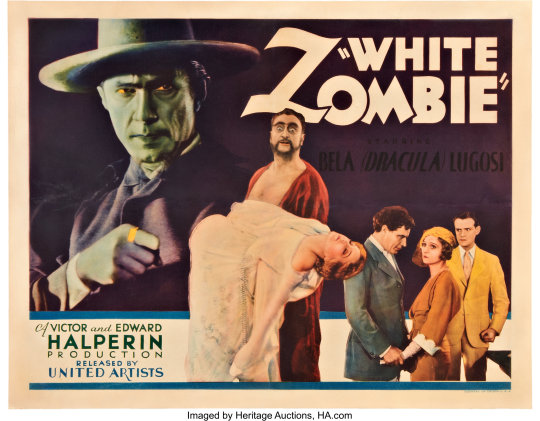
Por Gonzalo Jiménez
Los zombis, tal como los conocemos, son una creación de George A. Romero. Ese es el canon que, de alguna manera, ha imperado en Hollywood desde que Romero dirigiera en 1968 La noche de los muertos vivientes. Los zombis en Romero no guardan relación con el mito haitiano, salvo en el detalle de que son muertos reanimados; pero su origen es la radiación de un satélite que cayó del espacio.
El zombi ya posee entidad como uno de los monstruos clásicos del cine; hasta puede hablarse de un género de películas. Los muchos fanáticos de los filmes y series de TV sobre zombis ignoran cuál fue el primer gran éxito que el tema tuvo en Hollywood: un largometraje que había sido olvidado durante décadas hasta que la TV lo rescató en los años 60 y volvió a ser apreciado por una nueva generación. Esta es la historia de ese filme, White Zombie (La legión de los hombres sin alma, 1932).
Parte de la razón para que White Zombie no tuviera el estatus de otros clásicos del cine de horror como Drácula o Frankenstein (ambas de 1931) es que White Zombie es un filme independiente, financiado por un pequeño estudio de cine, Halperin Productions, que formaba parte de la llamada Poverty Row, que era como se designaba a los estudios menores que operaban independientemente en Hollywood, como Monogram, Majestic, Mascot y Puritan, entre muchos otros, que ya no existen y pocos recuerdan ya.
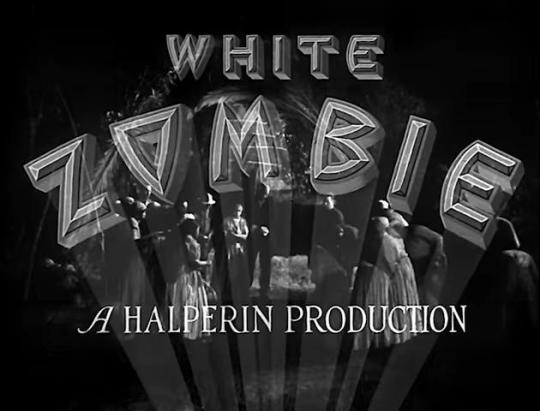
Según indica el libro Forgotten Horrors (Midnight Marquee Press. Baltimore, 1999), de George Turner y Michael Price, la palabra “zombie” fue introducida ante grandes audiencias en Estados Unidos con el libro sobre vudú haitiano The Magic Island, de William Seabrook. El concepto luego llegó al teatro, con la obra Zombie, que produjo Kenneth Webb en Nueva York y se estrenó en febrero de 1931. Sólo se ofrecieron 21 funciones de esa pieza. Curiosamente, Webb amenazó con demandar en marzo de ese año a los productores Edward y Víctor Halperin cuando estos anunciaron que iniciarían el rodaje de una película llamada White Zombie.
La historia de los hermanos Halperin es singular. Ambos arribaron a Hollywood a comienzos de la década de 1920. Tenían formación universitaria e inclinaciones por el teatro. Juntos produjeron una docena de películas mudas para los estudios First National, United Artists y Vitagraph; casi todas melodramas. Nada presagiaba que les interesaría incursionar en el género del cine de terror.
Los hermanos tenían una obsesión: encontrar una aproximación científica a la forma de hacer cine. En pocas palabras, teorizaban sobre hallar una fórmula que garantizara en 100% el éxito de una película. Sus análisis de filmes exitosos los condujo a preguntarse por qué funcionaban en la taquilla Drácula (Universal) o Dr. Jekyll y Mr. Hyde (Paramount). Los Halperin (Víctor siempre dirigió y Edward era el productor) concluyeron que los diálogos debían limitarse al 15% del filme y que el resto debía ser pura acción.

Esta aproximación a la trama también se reflejó en su manera de hacer cine. White Zombie se completó en apenas 11 días de rodaje. Víctor Halperin y Garnett Weston escribieron el guión, con la asesoría del sargento Faustin Wirkus, otrora administrador de la isla de La Gonave, frente a Haití. El presupuesto fue de 65.000 dólares, aportados por la empresa Amusement Securities Corp. y por el productor independiente Phil Goldstone. Y como estrellas del filme se contrataron a Madge Bellamy (actriz del cine mudo que anhelaba un regreso triunfal) y Bela Lugosi, fresco del éxito de taquilla obtenido en Drácula y Murders of the Rue Morgue. En algunos libros se indica que Bela Lugosi sólo recibió 800 dólares como pago por White Zombie (en el libro Forgotten Horrors se indica que fueron 500 dólares por una semana de trabajo), pero cuesta creer que, si bien era una producción independiente, el actor húngaro se tranzara por esa cifra. Madge Bellamy, por ejemplo, comentó que le pagaron 5.000 dólares por su papel, que es estrictamente secundario frente al de Lugosi.
Lo cierto es que White Zombie en absoluto luce como una película barata. Sin duda, los diálogos y ciertos aspectos de la trama han envejecido mal. Pero todavía sorprende la dirección de fotografía de Arthur Martinelli (de lejos, lo mejor de la película). El filme se rodó en los escenarios de los estudios Universal, por lo que los hermanos Halperin le sacaron provecho a los decorados de primer nivel de la empresa; el director de arte fue Ralph Berger, quien comisionó a la empresa Howard Anderson Co. para hacer los efectos especiales y los trucos de cámara, que simulaban escenarios inmensos. Por ejemplo, el interior del castillo de Murder Legendre (Lugosi) fue usado en Drácula y en El jorobado de Nuestra Señora de París.
Jack Pierce, creador del legendario maquillaje de la criatura de Frankenstein, hizo el maquillaje de los zombis en la película, así como del personaje de Bela Lugosi, Murder Legendre. Lugosi creó con Legendre uno de sus villanos más memorables. No sólo era una cuestión de maquillaje; ayudó también los acercamientos que la cámara hacía de su rostro. Legendre crea zombis a través de la magia negra para valerse de mano de obra que trabaje sin parar en su molino de caña. Pero los zombis a los que hace alusión el título del filme son seis hombres blancos, que fueron enemigos de Legendre y éste los transformó en muertos vivientes: Latour, el brujo antiguo mentor de Legendre; Von Gelder, un terrateniente adinerado; Víctor Trischer, ministro del Interior; Scarpia, oficial del ejército; Marquis, capitán de la policía; y Chauvin, el verdugo de la isla.
White Zombie, pese a sus limitaciones, probó ser un éxito en la taquilla y eventualmente, con el paso del tiempo, encontró defensores en los espacios menos esperados, como en el del músico (y ahora cineasta) Rob Zombie, quien bautizó a su primera banda con el título del filme. En YouTube es posible ver la película completa. Una curiosidad, para quienes son fanáticos del género de horror.
(Publicado originalmente el 11 de diciembre de 2012 en el blog de los Hermanos Chang).
3 notes
·
View notes
Text
Revolt of the Zombies, 1936

Found in Paint It Black blog.
Revolt of the Zombies is a 1936 American horror film directed by Victor Halperin, produced by Edward Halperin, and stars Dean Jagger and Dorothy Stone.
3 notes
·
View notes
Text
Episode 178 - Aliens, Extraterrestrials, and UFOs
This episode we’re talking about non-fiction books about Aliens, Extraterrestrials, and UFOs! We discuss unexplained aerial phenomenon, owls, exobiology, and aliens wearing hats!
You can download the podcast directly, find it on Libsyn, or get it through Apple Podcasts, Stitcher, Google Podcasts, or your favourite podcast delivery system.
In this episode
Anna Ferri | Meghan Whyte | Matthew Murray | Jam Edwards
Things We Read (or tried to…)
Astrobiology: A Very Short Introduction by David C. Catling
The Zoologist's Guide to the Galaxy: What Animals on Earth Reveal about Aliens – and Ourselves by Arik Kershenbaum
Death from the Skies! These Are the Ways the World Will End… by Philip Plait
Death from the Skies! The Science Behind the End of the World…
Search for the Unknown: Canada’s UFO Files and the Rise of Conspiracy Theory by Matthew Hayes
Aliens: Join the Scientists Searching Space for Extraterrestrial Life by Joalda Morancy, illustrated by Amy Grimes
Picturing Extraterrestrials: Alien Images in Modern Mass Culture by John F. Moffitt
Intimate Alien: The Hidden Story of the UFO by David J Halperin
They Are Already Here: UFO Culture and Why We See Saucers by Sarah Scoles
Mirage Men: An Adventure into Paranoia, Espionage, Psychological Warfare, and UFOs by Mark Pikington
Mirage Men (Wikipedia) - The documentary
Other Media We Mentioned
Chariots of The Gods by Erich von Däniken
Chariots of the Gods? (Wikipedia)
The X-Files (Wikipedia)
Mars Attacks! (1996 film)
The yodeling scene ("Indian Love Call" by Slim Whitman)
Mars Attacks (Wikipedia)
The trading cards
Communion: A True Story by Whitley Strieber
The Disappearing Act by Florence de Changy
Disappearance of the Malaysian airplane
Links, Articles, and Things
Barney and Betty Hill incident (Wikipedia)
METI International (Wikipedia)
Reptilian conspiracy theory (Wikipedia)
ʻOumuamua (Wikipedia)
Raëlism (Wikipedia)
Martian canals (Wikipedia)
Neon Squid Books
U.S. judge says Penguin Random House book merger cannot go forward
Advanced Aerospace Threat Identification Program (Wikipedia)
How Blink-182’s Tom DeLonge Became a U.F.O. Researcher
10 Non-Fiction Books About Aliens & UFOs (and other phenomena) by BIPOC (Black, Indigenous, & People of Colour) Authors
Every month Book Club for Masochists: A Readers’ Advisory Podcasts chooses a genre at random and we read and discuss books from that genre. We also put together book lists for each episode/genre that feature works by BIPOC (Black, Indigenous, & People of Colour) authors. All of the lists can be found here.
Aliens: The World's Leading Scientists on the Search for Extraterrestrial Life edited by Jim Al-Khalili
Black Holes, Wormholes and Time Machines by Jim Al-Khalili
More Encounters with Star People: Urban American Indians Tells Their Stories by Ardy Sixkiller Clarke
Strange New Worlds: The Search for Alien Planets and Life Beyond Our Solar System by Ray Jayawardhana
Physics of the Impossible by Michio Kaku
Aliens: Join the Scientists Searching Space for Extraterrestrial Life by Joalda Morancy
Mapping the Heavens: The Radical Scientific Ideas That Reveal the Cosmos by Priyamvada Natarajan
Mondes d'ailleurs by Trịnh Xuân Thuận
Cosmic Queries: StarTalk's Guide to Who We Are, How We Got Here, and Where We're Going by Neil deGrasse Tyson
Why Aren't They Here: The Question of Life on Other Worlds by Surendra Verma
Give us feedback!
Fill out the form to ask for a recommendation or suggest a genre or title for us to read!
Check out our Tumblr, follow us on Twitter or Instagram, join our Facebook Group, or send us an email!
Join us again on Tuesday, July 18th it’s time for our annual One Book One Podcast pitch episode!
Then on Tuesday, August 1st we’ll be discussing the genre of Pulp Fiction!
2 notes
·
View notes
Photo
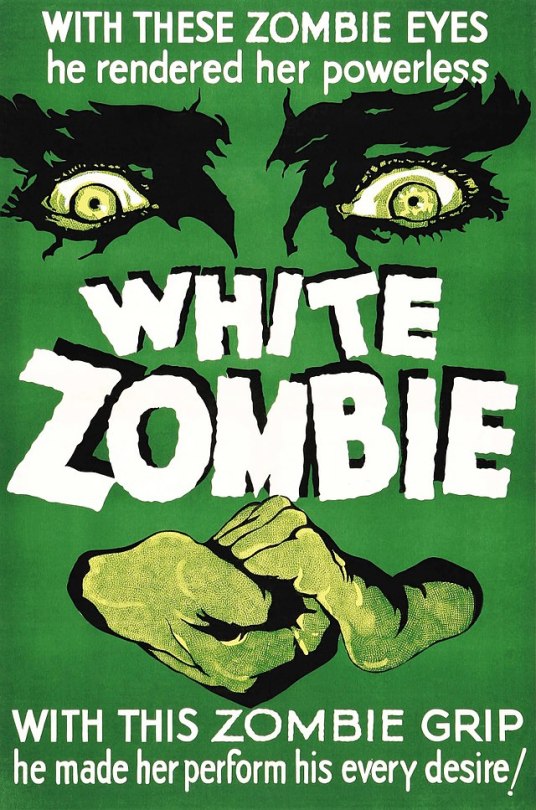
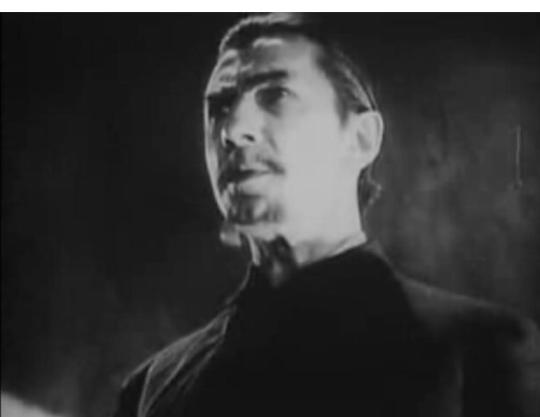
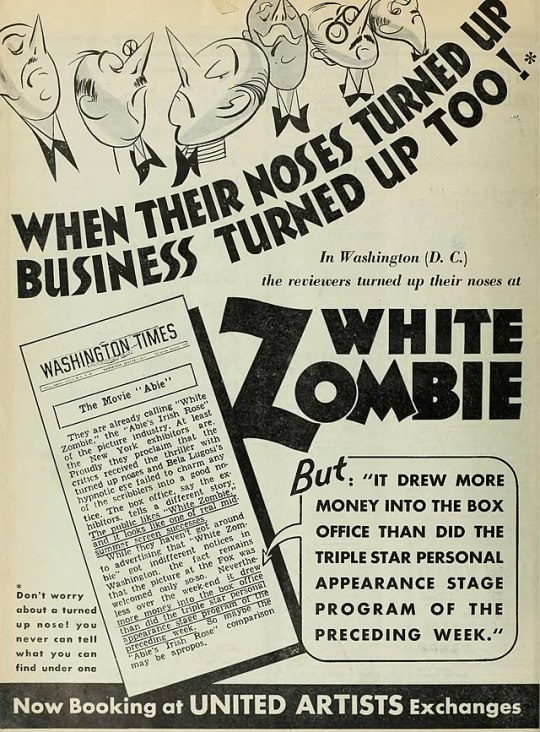

White Zombie (1932)
White Zombie is a 1932 American pre-Code horror film independently produced by Edward Halperin and directed by Victor Halperin. The screenplay by Garnett Weston, based on The Magic Island by William Seabrook, is about a young woman's transformation into a zombie at the hands of an evil voodoo master. Bela Lugosi stars as the zombie master "Murder" Legendre, with Madge Bellamy appearing as his victim. Other cast members include Joseph Cawthorn, Robert W. Frazer, John Harron, Brandon Hurst, and George Burr MacAnnan.
Large portions of White Zombie were shot on the Universal Studios lot, borrowing many props and scenery from other horror films of the era. The film opened in New York to negative reception, with reviewers criticizing the film's over-the-top story and weak acting. While the film made a substantial financial profit as an independent feature, it proved less popular than other horror films of the time.
White Zombie is considered the first feature length zombie film, which also gave birth to cinematic voodoo. A loose sequel, Revolt of the Zombies, opened in 1936. Modern reception to White Zombie has been more positive. Some critics have praised the film's atmosphere and compared it to the 1940s horror films of Val Lewton, while others still have unfavourable opinions on the quality of the acting.
0 notes
Text
White Zombie (1932)
White Zombie (1932)
VICTOR HALPERIN
Bil’s rating (out of 5): BBB
USA, 1932. Victor & Edward Halperin Productions. Story and Dialogue by Garnett Weston, based on the novel by William B. Seabrook. Cinematography by Arthur Martinelli. Produced by Edward Halperin. Music by Guy Bevier. Production Design by Conrad Tritschler. Film Editing by Harold McLernon.
A young couple in love arrive at the Haitian plantation of rich…
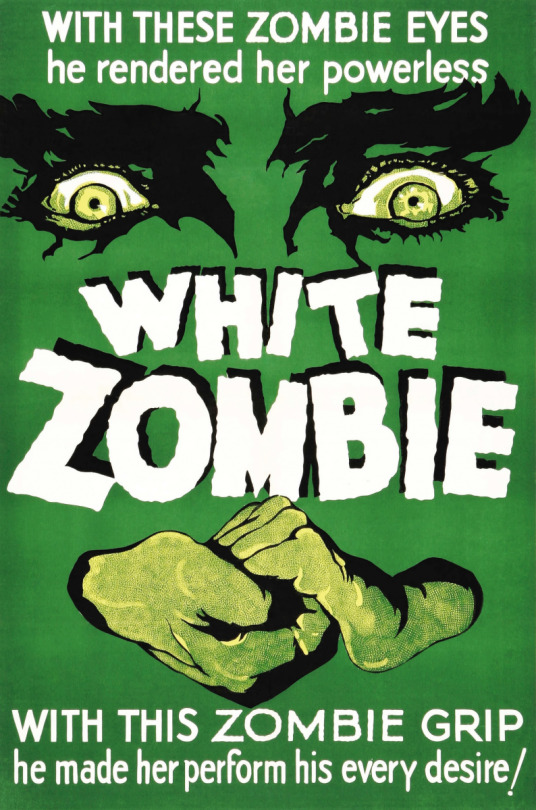
View On WordPress
#Annette Stone#Arthur Martinelli#Bela Lugosi#Brandon Hurst#Claude Morgan#Conrad Tritschler#Dan Crimmins#Edward Halperin#Frederick Peters#Garnett Weston#George Burr MacAnnan#Guy Bevier#Harold McLernon#John Fergusson#John Harron#John T. Prince#Joseph Cawthorn#Madge Bellamy#Robert Frazer#Velma Gresham#Victor & Edward Halperin Productions#Victor Halperin#William B. Seabrook
4 notes
·
View notes
Text
Bela Lugosi’s Dead | Notes on the Work of a (Possible) Blood-drinking Aristocrat

It’s a sad fact that Hollywood has never been very good in terms of diversity in front of or behind the camera (and still has a long way to go), and over the years has often limited opportunities or slotted actors in roles that play to their “otherness”. This weighed heavily on my mind as I watched White Zombie, as I don’t know if any actor has taken control of that otherness and used it to such unsettling effect as Bela Lugosi does so here. Lugosi’s presence is so distinct and his delivery so mannered that he seems not to be playing a villain so much as embodying evil itself and piercing through the artifice of the film around him. Lugosi’s performance also ties into the film’s racial politics, which are queasy as can be expected for a horror film about Haitian voodoo, but complex. A character decries local practices as “sins that even the devil would be ashamed of”, yet the plot centres on a foreign, colonial presence exploiting those practices, and it isn’t a stretch to read his act of turning his enemies into zombies as a metaphor for slavery.
The film exists in an eerie dream state between silent and sound film, and any imperfections only enhance that feeling. Dialogue and sound intrude jarringly into silence or music (particularly the shriek of a vulture, which never stops being unnerving), and any stilted acting brings to mind the zombies enslaved by the villain. The atmosphere is evocative and foreboding, with images that sear themselves into our mind. Victor Halperin would go on to direct a sequel, Revolt of the Zombies, which does not star Lugosi but recycles the same shot of his eyes. Lugosi’s absence is sorely felt, as is any semblance of the atmosphere or visual style present in this film, and its handling of race lacks the complexity offered by this earlier effort. The movie briefly perks up when the revolt in the title finally happens, producing a handful of interesting images, but for a movie that runs about an hour, it easily feels thrice as long.
I would be remiss to delve into Lugosi’s work without revisiting his iconic work in Tod Browning’s Dracula. I don’t know if I actually think the movie is any better this time around, but I did find myself more endeared by it. It’s hard to find interesting things to say about his work here, but while what we know of Lugosi’s life suggests that he probably wasn’t really a centuries old blood-drinking aristocrat, the lived-in quality of his performance might have you fooled. George Melford’s Spanish language version is a much more dynamic film on the whole (and is on the shortlist of my favourite vampire movies), yet there’s no denying Lugosi’s absence isn’t felt. (The wonders of modern technology have allowed the the transplant of Jim Carrey into The Shining and many of our beloved celebrities into hardcore pornography; I would argue that deepfaking Lugosi into the Melford Dracula is just as worthwhile an experiment.) It’s safe to say that he’s much better than the movie he’s in, the stage origins of which are apparent (characters are frequently shot staidly, centre frame; much of the action takes place in the same room with characters entering and exiting in lieu of actual incident), yet that stylistic stiffness yields great dividends when the action moves to Dracula’s castle, with those scenes having an aura of entombment.
Perhaps this approach was an extension of Browning’s view of the genre. Many vampire movies emphasize the sensual, striving to demonstrate the erotic allure of the condition; Browning’s film argues that the living dead lead a pretty dismal existence. “There are far worse things awaiting man than death.” An arguably dismissive attitude towards vampirism could be read into Mark of the Vampire, which reunites Lugosi and Browning. The movie is at times quite atmospheric, particularly when Lugosi is onscreen, yet in a way that feels fairly divorced from the energy of the film as a whole. (He also unfortunately has no dialogue until the end, although he makes the most of it.) If Dracula suffers in comparison to the stylishness of James Whale’s Frankenstein movies, then Mark of the Vampire could have used some of the tongue-in-cheek energy Whale brought to The Old Dark House.
The Devil Bat finds Lugosi working with a much smaller production by Producers Releasing Corporation, a Poverty Row studio. It’s not an especially dynamic work, featuring a not terribly convincing bat puppet and a scene where his character awkwardly confesses to his crimes and schemes up a murder on the fly to cover his tracks, yet his professionalism can’t be denied and he’s quite good in the role. Bela Lugosi Meets a Brooklyn Gorilla, which has a technically accurate but misleading title, finds his career in more obvious decline. Your enjoyment may depend heavily on your tolerance for Jerry Lewis style shrillness, yet once again Lugosi treats his role as serious as a heart attack. This movie is also of interest to fans of Duke Mitchell, showing him well before he developed the vulgar charisma of his wannabe Godfather characters in Massacre Mafia Style and Gone with the Pope. Towards the end of his life Lugosi came into the orbit of Ed Wood, considered by many to be the worst director of all time. The extent of Lugosi’s role in Plan 9 From Outer Space is well known, but his last speaking part came in Bride of the Monster. Neither film did much for me (Wood’s distinct brand of badness has little effect on me for whatever reason, and Bride didn’t seem all that worse than some of the other films I’ve seen this month, to be honest) but Lugosi makes the film just a bit more engaging whenever he’s onscreen.
Going back to his prime years, Murders in the Rue Morgue finds Lugosi on stage at a carnival sideshow, pleads with an unappreciative audience, and by extension, the viewer (“Heresy? Do they still burn men for heresy? Then burn me monsieur, light the fire! Do you think your little candle will outshine the flame of truth?”). There’s a sense of resentment here, of doing great yet unappreciated work in squalid conditions, that I suspect might have resonated with him over the course of his career. The out of place aristocracy he brings to the role makes him all the more magnetic and, at the same time, undeniably creepy, which makes the relatively explicit (by 1932 standards) content resonate. (A gruesome knife fight and a sexually charged torture scene are among the highlights spicing up the first act.) The movie definitely loses a little whenever Lugosi isn’t onscreen, yet Robert Florey’s visual direction, heavily influenced by German expressionism, is dynamic enough to always keep things engaging. This is the movie Lugosi made after walking away from Frankenstein, and while there are similarities in visual style, Lugosi’s performance here couldn’t be more different from Boris Karloff’s in the other film.
It’s hard to discuss Lugosi without mentioning Karloff, that other titan of early sound horror films. Karloff’s career ended with more dignity (his last film, Targets, offers a reflection on his career, the horror genre and violence in ‘60s America), yet going head to head in The Black Cat, Lugosi wins. Karloff is great, giving an eerily mannered, subtly monstrous performance, yet Lugosi is able to create a character that not only is implied to have the same capacity for monstrous behaviour, but get us to empathize with him. There’s an early line delivery that might be one of the best I’ve ever heard with its mixture of menace and deep psychological wounds. (I will quote it, but hearing it delivered by the man himself will send chills down your spine. ”Have you ever heard of Kurgaal? It is a prison below Omsk. Many men have gone there. Few have returned. I have returned. After fifteen years... I have returned.”) He grounds the twisted headspace that the movie inhabits, which Edgar G. Ulmer evokes with a bold visual style and uncanny art direction. The cumulative result is the best horror film I’ve seen in quite some time.
#film#movie review#white zombie#revolt of the zombies#victor halperin#dracula#mark of the vampire#tod browning#the devil bat#jean yarbrough#bela lugosi meets a brooklyn gorilla#william beaudine#murders in the rue morgue#robert florey#the black cat#edgar g. ulmer#plan 9 from outer space#bride of the monster#edward d. wood jr.
9 notes
·
View notes
Text
White Zombie
White Zombie is a 1932 American pre-Code horror film independently produced by Edward Halperin and directed by Victor Halperin. The screenplay by Garnett Weston, based on The Magic Island by William Seabrook, is about a young woman’s transformation into a zombie at the hands of an evil voodoo master.
Short Plot: A young man turns to a witch doctor to lure the woman he loves away from her fiancé, but instead turns her into a zombie slave.
Watch it free on https://thelastpicture.show/white-zombie-1932/
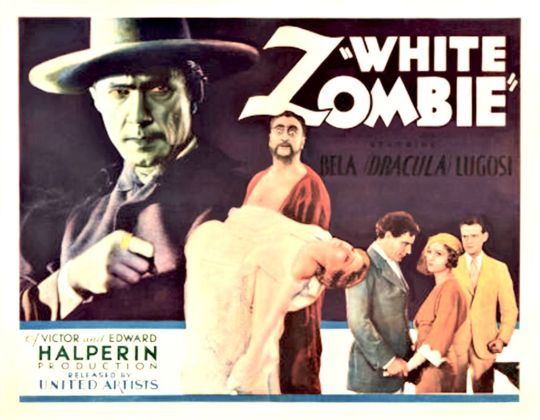
#oldmovies#oldhollywood#classichollywood#classicmovies#vintage#goldenageofhollywood#movies#cinema#movie#vintagehollywood#oldmoviestars#film#silverscreen#classicfilm oldhollywoodstars#blackandwhite#classic#retro#classiccinema#goldenage#vintagemovies
2 notes
·
View notes
Text

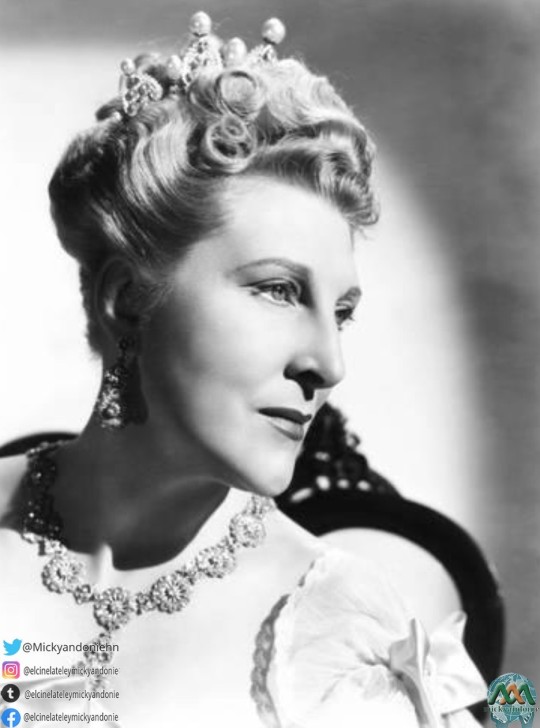

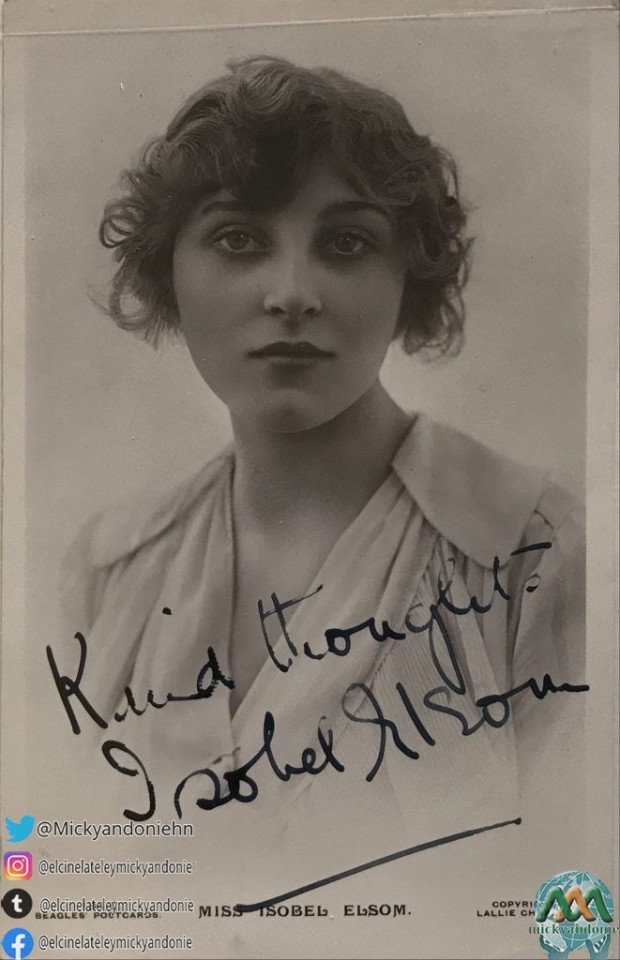
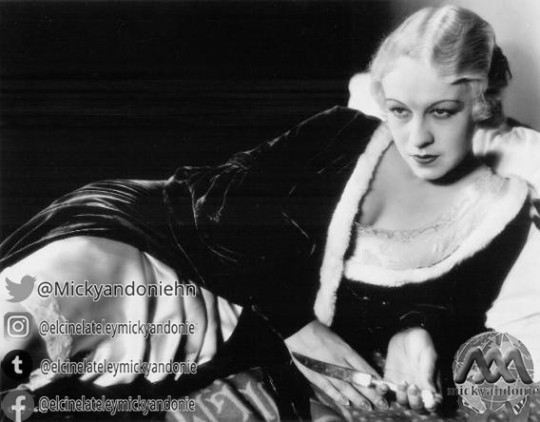


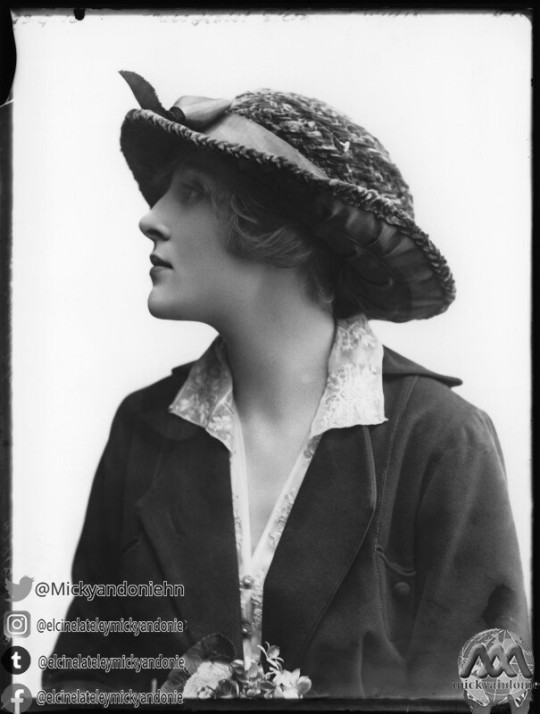
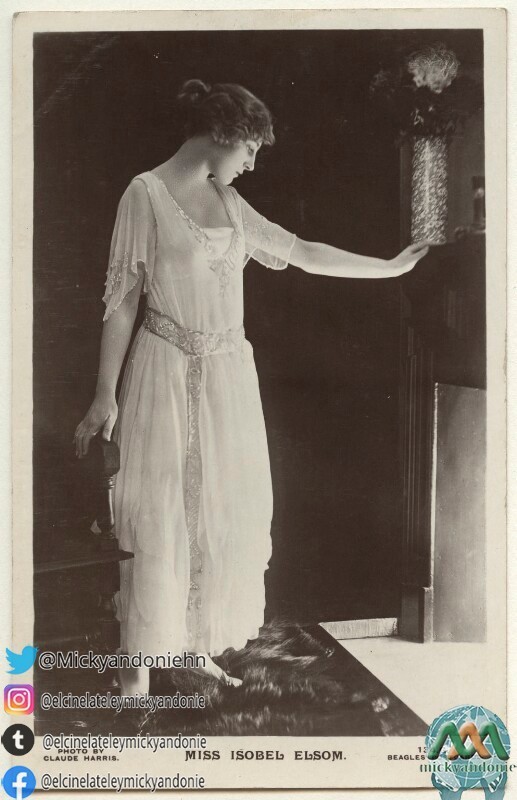
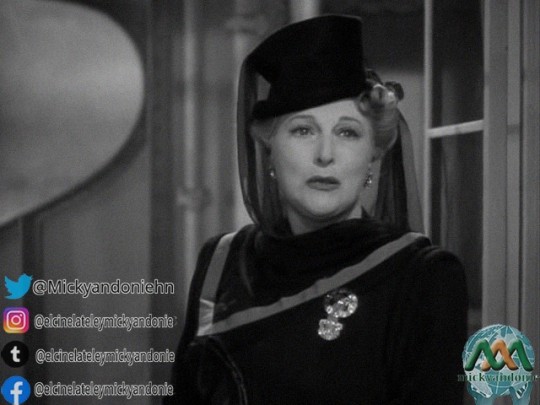
Isobel Elsom.
Filmografía
Teatro
1917-1918 : The Freaks, de Arthur Wing Pinero, con C.V. France y Leslie Howard (Londres)
1920-1921 : Up in Mabel's Room, de Wilson Collison (Londres)
1922-1923 : Sweet Lavender, de Arthur Wing Pinero (Londres)
1923-1924 : The Green Goddess, de William Archer, con George Arliss, Ivan F. Simpson (Londres)
1926 : The Ghost Train, de Arnold Ridley, con Eric Blore, Claudette Colbert
1927 : The Mulberry Bush, de Edward Knoblauch, con Claudette Colbert
1927 : People don't do such Things, de Lyon Mearson y Edgard M. Schoenberg, con Stanley Logan
1928 : The Silver Box, de John Galsworthy, con Mary Forbes
1928 : The Behavior of Mrs. Crane, de Harry Segall, con Walter Connolly y Charles Trowbridge
1928 : The Outsider, de Dorothy Brandon
1938-1939 : American Landscape, de Elmer Rice, con Charles Dingle y Charles Waldron
1940 : Ladies in Retirement, de Reginald Denham y Edward Percy, con Flora Robson
1942 : The Flowers of Virtue, de Marc Connelly, con Frank Craven, Thomas Gomez y Vladimir Sokoloff
1944-1945 : Hand in Glove, de Charles K. Freeman y Gerald Savory, dirección de James Whale
1950 : The Innocents, de William Archibald, con música de Alex North
1950 : The Curious Savage, de John Patrick, con Lillian Gish
1951 : Romeo y Julieta, de William Shakespeare, con Olivia de Havilland y Jack Hawkins
1952 : The Climate of Eden, de Moss Hart
1954m : The Burning Glass, de Charles Langbridge Morgan, con Cedric Hardwicke y Walter Matthau
1957 : Hide and Seek, de Roger McDougall y Stanley Mann, con Barry Morse y Basil Rathbone
1957 : The First Gentleman, de Norman Ginsbury, con Walter Slezak.
Cine
1915 : A Prehistoric Love Story, de Leedham Bantock (corto)
1916 : Milestones, de Thomas Bentley
1918 : The Man who won, de Rex Wilson
1918 : The Way of an Eagle, de G.B. Samuelson
1918 : The Elder Miss Blossom, de Percy Nash
1919 : Hope, de Rex Wilson
1919 : Quinneys, de Maurice Elvey y Herbert Brenon
1920 : Aunt Rachel, de Albert Ward
1921 : For her Father's Sake, de Alexander Butler
1922 : A Debt of Honour, de Maurice Elvey
1922 : The Game of Life, de G.B. Samuelson
1923 : The Harbour Lights, de Tom Terriss
1923 : The Wandering Jew, de Maurice Elvey.
1924 : Who is the Man ?, de Walter Summers
1924 : The Love Story of Aliette Brunton, de Maurice Elvey
1925 : The Last Witness, de Fred Paul
1925 : Le Réveil, de Jacques de Baroncelli
1926 : The Tower of London, de Maurice Elvey
1927 : Tragödie einer Ehe, de Maurice Elvey
1927 : Dance Magic, de Victor Halperin
1931 : The Other Woman, de G.B. Samuelson
1932 : The Crooked Lady, de Leslie S. Hiscott
1933 : The Thirteenth Candle, de John Daumery
1934 : The Primrose Path, de Reginald Denham
1941 : Ladies in Retirement (El misterio de Fiske Manor), de Charles Vidor
1942 : Eagle Squadron, de Arthur Lubin
1942 : Laugh your Blues away, de Charles Barton
1942 : Seven Sweethearts, de Frank Borzage
1942 : You were never Lovelier (Bailando nace el amor), de William A. Seiter
1943 : Forever and a Day (Siempre y un día), de Edmund Goulding y Cedric Hardwicke
1944 : Between two Worlds (Entre dos mundos), de Edward A. Blatt
1944 : Casanova Brown, de Sam Wood
1945 : The Unseen (Misterio en la noche), de Lewis Allen
1946 : Two Sisters from Boston, de Henry Koster
1946 : Of Human Bondage, de Edmund Goulding
1947 : Addio Mimi !, de Carmine Gallone
1947 : The Two Mrs. Carrolls (Las dos señoras Carroll), de Peter Godfrey
1947 : Monsieur Verdoux, de Charlie Chaplin
1947 : El fantasma y la señora Muir, de Joseph L. Mankiewicz
1947 : Ivy, de Sam Wood
1947 : Escape Me Never, de Peter Godfrey y LeRoy Prinz
1947 : The Paradine Case, de Alfred Hitchcock
1948 : Smart Woman, de Edward E. Blatt
1949 : The Secret Garden, de Fred M. Wilcox
1954 : Desirée, de Henry Koster
1954 : Deep in my Heart, de Stanley Donen
1955 : The King's Thief, de Robert Z. Leonard
1955 : La colina del adiós, de Henry King
1956 : Over-exposed, de Lewis Seiler
1956 : 23 Paces to Baker Street (A 23 pasos de Baker Street), de Henry Hathaway
1956 : El loco del pelo rojo, de Vincente Minnelli
1957 : The Guns of Fort Petticoat, de George Marshall
1958 : Rock-a-bye Baby (Yo soy el padre y la madre), de Frank Tashlin
1959 : The Young Philadelphians (La ciudad frente a mi), de Vincent Sherman
1959 : The Miracle (Promesa rota), de Irving Rapper
1960 : The Bellboy, de Jerry Lewis
1961 : The Errand Boy.
1961 : The Second Time Around (Sola ante el peligro), de Vincent Sherman
1963 : Who's minding the Store ? (Lío en los grandes almacenes), de Frank Tashlin
1964 : My Fair Lady, de George Cukor
1964 : The Pleasure Seekers, de Jean Negulesco.
Créditos: Tomado de Wikipedia
https://es.wikipedia.org/wiki/Isobel_Elsom
#HONDURASQUEDATEENCASA
#ELCINELATELEYMICKYANDONIE
10 notes
·
View notes
Photo

FAVOURITE FILMS:
Title: White Zombie (1932).
Director: Victor Halperin.
Produced by: Edward Halperin.
Cast: Bela Lugosi, Madge Bellamy, Robert Frazer, John Harron...
Murder Legendre (Bela Lugosi) is the menacingly named zombie master of Haiti. So it's to him that Charles Beaumont (Robert Frazer) goes when he needs help for a twisted plan. Spurned in marriage by Madeline Short (Madge Bellamy), Beaumont has decided on a simple solution: kill Short and bring her back as a zombie. Then she can be his forever. The only problem comes when Legendre keeps the fetching girl for himself -- and her new husband (John Harron) comes to Madeline's rescue.
2 notes
·
View notes
Text
K
The King and I - Brazil - 2010 (Pro-Shot's master)
FORMAT: MP4 (HD)
CAST: Tuca Andrada (Rei), Cláudia Netto (Anna Leonowens), Luciana Bueno (Lady Thiang), Bianca Tadini (Tumptim)
The King and I - North Shore Music Theatre - September-October, 2011 (Pro-Shot's master)
FORMAT: VOB (with smalls) (SD)
CAST: Kate Fisher (Anna Leonowens), Lorenzo Lamas (King of Siam), Lisa Yuen (Lady Thiang), Manna Nichols (Tuptim), Joshua Dela Cruz (Lun Tha), Ron Wisniski (Sir Edward Ramsey)
NOTES: Proshot. Performed in the round, one camera on a tripod and sound patched in from the soundboard.
The King and I - West End Revival - November 29, 2018 (Pro-Shot's master)
FORMAT: MP4 (HD)
CAST: Kelli O’Hara (Anna Leonowens), Ken Watanabe (King of Siam), Ruthie Ann Miles (Lady Thiang), Na-Young Jeon (Tuptim), Dean John-Wilson (Lun Tha), Edward Baker-Duly (Sir Edward Ramsey), Jon Chew (Prince Chulalongkorn), Edward Baker-Duly (Captain Orton), Billy Marlow (Louis Leonowens), Takao Osawa (Kralahome), William Michael Lee (Phra Alack)
NOTES: Ruthie uses a walking stick throughout to aid her recovery from a previous car accident and loss of her two children. She gives an amazing performance.
King Kong - Broadway - August 10, 2019
FORMAT: MP4 (HD)
CAST: Christiani Pitts (Ann Darrow), Eric William Morris (Carl Denham), Erik Lochtefeld (Lumpy)
NOTES: The full show, recorded from the rear orchestra on a phone. Most of the video is the August 10th recording but occasionally some promotional footage and the February 9th video are edited in to provide other views. The recording starts off with a lot of wandering, shakiness, and washout but gets better somewhat better as it goes on. Still not as good as an actual video filmed with a camera, but it exists. 1920x1080p, 4.29 GB.
King Kong - Broadway - October, 2018 (Preview) (House-Cam's master)
FORMAT: MP4 (SD)
CAST: Christiani Pitts (Ann Darrow), Eric William Morris (Carl Denham), Erik Lochtefeld (Lumpy), Harley Jay (Barman), Rory Donovan (Captain Engelhorn/Chief of Police), Jon Hoche (Voice of Kong)
NOTES: Full stage shot with clear audio direct from soundboard.
Kinky Boots - Broadway - March 15, 2013 (Preview) (Lanelle's master)
FORMAT: VOB (with smalls) (SD)
CAST: Stark Sands (Charlie Price), Billy Porter (Lola), Annaleigh Ashford (Lauren), Celina Carvajal (Nicola), Daniel Stewart Sherman (Don), Marcus Neville (George), Jonah Halperin (s/b Young Charlie), Marquise Neal (Young Lola)
NOTES: Fun show with a pertinent (but not obtrusive) message, Billy Porter is just amazing. This is somewhat more obstructed than other shows because the person in front was leaning forward and moving a lot, so there's a head in some of the scenes. Some shakiness and wandering in between, particularly at the beginning, but otherwise a good video with nice closeups. Complete show including curtain call. A-
Kinky Boots - Broadway - July 17, 2018 (NYCG8R's master)
FORMAT: VOB (with smalls) (SD)
CAST: David Cook (Charlie Price), Stephane Duret (s/b Lola), Carrie St Louis (Lauren), Caroline Bowman (Nicola), Daniel Stewart Sherman (Don), Marcus Neville (George), Corey Mach (Harry), Eugene Barry-Hill (Simon Sr.), Stephen Berger (Mr. Price), Adinah Alexander (Milan Stage Manager), Cooper Lantz (Young Charlie), Jesús Del Orden (Young Lola)
NOTES: Quite a few latecomers that walk in front but nothing too distracting; otherwise very well filmed HD video with clear picture and sound throughout; great video A
Kinky Boots - Broadway - May-August, 2017
FORMAT: MP4 (HD)
CAST: Brendon Urie (Charlie Price), J Harrison Ghee (Lola), Taylor Louderman (Lauren)
NOTES: Starts at Sex is in the Heel
Kinky Boots - First National Tour - April 17, 2016 (SJ Bernly's master)
FORMAT: VOB (with smalls) (SD)
CAST: Adam Kaplan (Charlie Price), J Harrison Ghee (Lola), Tiffany Engen (Lauren), Charissa Hogeland (Nicola), Aaron Walpole (Don), Jim J Bullock (George), Josh Tolle (Harry), Shawna M Hamic (Trish), Horace V Rogers (Simon Sr.), Tom Souhrada (Mr. Price), Zach Adkins (Richard Bailey), Patty Lohr (Pat), Annie Edgerton (Milan Stage Manager), Aidan Passaro (Young Charlie), Jomil Elijah Robinson (Young Lola)
Kinky Boots - Netherlands Tour - October 27, 2019
FORMAT: MOV (HD)
CAST: Jonathan Demoor (Charlie Price), Naidjim Severina (Lola), Vajèn van den Bosch (Lauren), Linda Verstraten (Nicola), Dennis Willekens (Don), Paul Donkers (George), Jeroen Phaff (Mr. Price)
Kinky Boots - Pre-Broadway/Chicago - November 4, 2012 (Closing Night) (SunsetBlvd79's master)
FORMAT: MP4 (HD)
CAST: Stark Sands (Charlie Price), Billy Porter (Lola), Annaleigh Ashford (Lauren), Celina Carvajal (Nicola), Daniel Stewart Sherman (Don), Marcus Neville (George), Andy Kelso (Harry), Jennifer Perry (Trish), Tory Ross (Pat)
NOTES: Another beautiful HD capture of the last performance in Chicago before Broadway, where it would go on to win the 2013 Tony. This performance has many changes from the other Chicago Dvd of the first performance. Includes the new song written towards the end of the Chicago run and many line changes. Also includes curtain speech by Stark! A+
Kinky Boots - UK Tour - December 26, 2018 (Matinee) (shoeroom's master)
FORMAT: MOV (HD)
CAST: Joshua St Clair (u/s Charlie Price), Kayi Ushe (Lola), Paula Lane (Lauren), Helen Ternent (Nicola), Demitri Lampra (Don), Adam Price (George), Daniel Conway (u/s Harry), Niki Evans (Trish), Fred Smiley (Simon Sr.), Andy Watkins (Mr. Price), George Grayson (u/s Richard Bailey), Lizzie Bea (Pat), Mary Fox (Maggie), Shaun Dalton (Hooch), Alfie Parker (Mutt), Portia Harry (Gemma Louise), Scarlet Gabriel (Milan Stage Manager), John Dempsey (Referee), Connor Collins (Angel #1), Toyan Thomas-Brown (Angel #2), John Dempsey (Angel #3), Chileshé Mondelle (Angel #4), Joshua Lovell (Angel #5), Damon Gould (Angel #6)
Kinky Boots - UK Tour - September, 2018 (hitmewithyourbethshot's master)
FORMAT: MP4 (HD)
CAST: Joel Harper-Jackson (Charlie Price), Callum Francis (Lola), Paula Lane (Lauren), Helen Ternent (Nicola), Demitri Lampra (Don), Adam Price (George), Joshua St Clair (Harry), Niki Evans (Trish), Fred Smiley (Simon Sr.), Andy Watkins (Mr. Price), Daniel Conway (Richard Bailey), Lizzie Bea (Pat), Scarlet Gabriel (Milan Stage Manager), Connor Collins (Angel #1), John Dempsey (Angel #2), Damon Gould (Angel #3), Joshua Lovell (Angel #4), Chileshé Mondelle (Angel #5), Toyan Thomas-Brown (Angel #6)
Kinky Boots - West End - November 27, 2018 (Pro-Shot's master)
FORMAT: MP4 (HD)
CAST: Killian Donnelly (Charlie Price), Matt Henry (Lola), Natalie McQueen (Lauren), Cordelia Farnworth (Nicola), Sean Needham (Don), Antony Reed (George), Jordan Fox (Harry), Anna Stolli (Trish), Robert Grose (Simon Sr.), Graham Kent (Mr. Price), Jonathan Carlton (Richard Bailey), Rosie Glossop (Pat), Emma Odell (Milan Stage Manager), Charlie Underhill (Young Charlie), Temba Mliswa (Young Lola), Jak Allen-Anderson (Angel #1), Jed Berry (Angel #2), Louis Clarke-Clare (Angel #3), Daniel Downing (Angel #4), Jemal Felix (Angel #5), Jon Reynolds (Angel #6), Abbey Addams, Ben Jennings, Ben Larcombe, Christopher Parkinson, David Haydn, Fred Wilcox, Hannah Price, Jude Muir, Kayleb Rene-gray, Keith Higham, Momar Diagne, Olivia Winterflood, Rio Lewis, Robert Jones, Samson Wakayu, Suzie McAdam, Tom Scanlon
NOTES: Pro-shot. Filmed live on stage at the Adelphi Theatre (London, England) and distributed commercially.
Kiss Me, Kate - British Television Production - April 21, 1964
FORMAT: VOB (with smalls) (SD)
CAST: Patricia Morison (Lilli Vanessi / Katharine), Howard Keel (Fred Graham / Petruchio), Isabelle Lucas (Hattie), Millicent Martin (Lois Lane / Bianca), Irving Davies (Bill Calhoun / Lucentio), Eric Barker (Harrison Howell), Danny Green (Gangster / First Man), Bill Owen (Gangster / Second Man)
NOTES: This version was rewritten and abbreviated to fit within its 95-minute time slot. A little on the dark side, in black and white with a slight blue tinge, has producer’s counter numbers hard-coded on the screen in the upper third. This version of the show was produced for the launch of a new station in the UK. After months of preparing the launch of the new television station—with it’s brand-new 625 line resolution (until then UK TV’s had a resolution of 405 lines)—the night turned out to be a disaster. 50 minutes before the launch, a fire broke out at a local power station, cutting power to most of London but not the television station. They started the evening’s news show which was to be followed by this broadcast, but it soon became clear that there was no audience, and after a few minutes, the schedule was abandoned. The production was instead shown the next day. The date that’s superimposed on the video is April 20, 1964—the originally scheduled night. It is unclear if this is a fi
Kiss Me, Kate - Third Broadway Revival - March, 2019 (NYCG8R's master)
FORMAT: VOB (with smalls) (SD)
CAST: Kelli O’Hara (Lilli Vanessi / Katharine), Will Chase (Fred Graham / Petruchio), Adrienne Walker (Hattie), James T Lane (Paul), Stephanie Styles (Lois Lane / Bianca), Corbin Bleu (Bill Calhoun / Lucentio), Mel Johnson Jr (Harry Trevor / Baptista), Terence Archie (Harrison Howell), John Pankow (Gangster / First Man), Lance Coadie Williams (Gangster / Second Man)
Kruimeltje de musical - The Netherlands - 2012 (Pro-Shot's master)
FORMAT: MP4 (HD)
CAST: Joes Brauers (Kruimeltje)
4 notes
·
View notes
Text
Master List of Books
Here is the master list of books to read. Please support black authors by visiting your library or purchasing these instead of downloading!
Intro to Black Radical Politics
assata: autobiography
angela davis an autobiography
angela davis: freedom is a constant struggle
huey p newton: revolutionary suicide
what is marxism all about?
beginners guide to marxism
huey p newton: to die for the people, collected writings
w.e.b du bois: w.e.b du bois speaks
the autobiography of malcom x
muammar gaddafi: the green book
walter rodney: groundings with my brothers
lenin: state and revolution
kwame ture: stokely speaks, from black power to pan-africanism
thomas sankara: women’s liberation and the african freedom struggle
harry haywood: black bolshevik
w.e.b. du bois: essay collection
debunking anti-communism myths & propaganda
karl marx & frederick engels: the communist manifesto
joseph stalin: dialetical & historical materialism
reading marx’s “capital” with david harvey
marxism-leninism study guide
basic marxism-leninism study plan
paulo freire: pedagogy of the oppressed
michael parenti: left anticommunism
Black and Marxist Feminism
keeanga-yamahtta taylor: how we get free, black feminism and the combahee river collective
bell hooks: yearning; race, gender, and cultural politics
oyèrónkẹ́ oyěwùmí: african women and feminism
audre lorde: sister outsider
claudia jones: an end to the neglect of the negro woman!
silvia federici: caliban and the witch
audre lorde: i am your sister
bell hooks: ain’t i a woman, black women and feminism
angela davis: modern motherhood, women and family in england
Prison Abolition
george jackson: blood in my eye
soledad brother: the prison letters of george jackson
angela davis: are prisons obsolete?
angela davis: political prisoners, prisons, and black liberation
paula c. johnson: voices of african american women in prison
On Racial Capitalism
jackie wang: carceral capitalism
e. franklin fraizer: black bourgeoisie
robin d.g. kelley: hammer and hoe
cedric j. robinson: black marxism
Critical Race Class Studies
w.e.b. du bois: black reconstruction
frantz fanon: black skin, white masks
patrick wolfe: traces of history; elementary structures of race
Black Studies Manifesto- Darlene Clark
Criteria of Black Art- W.E.B Dubois
Lynch Law- Ida B. Wells
On Being White and Other Lies- James Baldwin
James Baldwin Speech from 1965 Debate
The American Dream and the American Negro- James Baldwin
The Souls of Black Men- Hazel Carby
The Case for Reparations- Ta Nehisi Coates
Cultural Identity and the Diaspora- Stuart Hall
The Fact of Blackness- Franz Fanon
Negritude
Fragments of Epic Memory- Derek Walcott
The Groundings with My Brothers- Walter Rodney
The Politics of Healing in the Black Lives Movement- Deva Woodley
Unapologetic- Charlene Carruthers
Emergent Strategy- Adrienne Maree Brown
The Use of the Erotic as Power- Audre Lorde
On Capitalism, Fascism, Imperialism, Neocolonialism, Settler-Colonialism
frantz fanon: the wretched of the earth
walter rodney: how europe underdeveloped africa
eduardo galeano: open veins of latin america
samir amin: eurocentrism
michael parenti: blackshirts & reds
glen sean coulthard: red skin, white masks
clr james: the black jacobins
chris harman: a people’s history of the world
“decolonization is not a metaphor”
Indigenous Studies
nick estes: our history is the future
“decolonization is not a metaphor”
oyèrónkẹ́ oyěwùmí: women in the yoruba sphere
On Revolution:
frantz fanon: towards the african revolution
kwame nkrumah: africa must unite
black panthers speak
kwame ture: ready for revolution
steve biko: i like what i like; selected writings
black like mao, red china & black revolution
che guevera: guerilla warfare
walter rodney: a history of the guyanese working people, 1881-1905
return to the source – selected speeches by amilcar cabral
https://dialecticalartist.wordpress.com/politicalresources/
On Slavery:
stephanie e. jones-rogers: they were her property
Whiteness Studies
nell irvin painter: the history of white people
theodore w allen: the invention of the white race volume I
theodore w allen: the invention of the white race volume II
david r. roediger the wages of whiteness
david r. roediger: seizing freedom, slave emancipation & liberty for all
karen brodkin: how jews became white folks & what that says about race in america
On Gender, Sexuality, and Masculinities
c. riley snorton: black on both sides a racial history of trans identity
essex hemphill: ceremonies
robert f. reid-pharr: black gay man, essays
bell hooks: we real cool
maria lugones: heterosexualism and the colonial modern gender system
marlon m. bailey: butch queens up in pumps: gender, performance, and ballroom culture in detroit
robert aldrich: colonialism and homsexuality
eve kosofsky sedgwick: epistemology of the closet
https://www.aaihs.org/excavating-black-queer-thought-a-pride-bibliography/
“the roots of lesbian & gay oppression: a marxist view” by bob mccubbin
afsaneh najmabadi: women with mustaches and men without beards: gender and sexual anxieties of iranian modernity
anne mcclintock: imperial leather: race, gender, and sexuality in the colonial conquest
oyèrónkẹ́ oyěwùmí: gender epistemologies in africa
oyèrónkẹ́ oyěwùmí: the invention of women: making african sense of western gender discourses
oyèrónkẹ́ oyěwùmí: african gender studies a read
oyèrónkẹ́ oyěwùmí: the invention of women
oyèrónkẹ́ oyěwùmí: what gender is motherhood?
Disability Studies
disability studies
Critical Reads
marx’s das kapital for beginners
black panther ten point program
Articles, Speeches, and Essays
w.e.b. du bois: essay collection
amiri baraka: essay collection
james baldwin: the free and the brave
adrienne rich: compulsory heteorsexuality and lesbian existence
david m. halperin: essay collection
e. patrick johnson: black queer studies a critical anthology
stuart hall: essay collection
audre lorde: the masters tools will never dismantle the master’s house
kwame nkrumah: axioms of kwame nkrumah
angela davis essays on liberation
clr james: black power, its past, today, and the way ahead
edward said’s lecture at york university
kwame ture: we are all africans
the death of stockley carmichael (and later kwame ture)
raewyn connell essay collection
stalin: marxism versus liberalism
what is dialectical materialism?
racism in the communist movement
the logic of lesser evilism
lenin: the three sources and three component parts of marxism
oyèrónkẹ́ oyěwùmí: de-confounding gender: feminist theorizing and western culture,
Cultural Texts
Bell hooks: all about love
James Baldwin
go tell it on the mountain
giovanni's room
another country
the fire next time
if beale street could talk
Sonny’s blues
just above my head
notes of a native son
nobody knows my name
rap on race
no name in the street
a dialogue
devil finds work
the evidence of things not seen
baldwin: collected essays
the cross of redemption
Toni Morrison
the bluest eye (1969)
sula (1971)
song of solomon (1977)
beloved (1986)
paradise (1997)
a mercy (2008)
the source of self-regard: selected essays, speeches, and meditations (2019) V
24 notes
·
View notes
Text
Motivational Health Quotes

Make eating well and excercise a priority in your life with these motivational quotes curated by the Hubbelt review team.
“A healthy outside starts from the inside.” Robert Urich
“To keep the body in good health is a duty, otherwise we shall not be able to keep our mind strong and clear.” Buddha
“Health is not valued till sickness comes.” Thomas Fuller
“Take care of your body. It’s the only place you have to live.” Jim Rohn
“Health is the greatest gift.” Buddha
“Health is the crown on the well person’s head that only the ill person can see.” Robin Sharma
“It is health that is real wealth and not pieces of gold and silver.” Mahatma Gandhi
“Those who think they have no time for healthy eating will sooner or later have to find time for illness.” Edward Stanley

“Happiness is the highest form of health.” Dalai Lama
“The first wealth is health.” Ralph Waldo Emerson
“Healthy citizens are the greatest asset any country can have.” Winston Churchill
“You learn good health and family are it, and nothing else matters.” Mike Adametz
“Take care of yourself, be healthy, and always believe you can be successful in anything you truly want.” Alessandra Ambrosio
“If you’re too busy to workout, your priorities need to change. I can’t think of too many things more important than your health.” Rolsey
“I’m healthy as can be – not an ache or pain. A lot of my prayer is thanking God that I am healthy. I pray for long life and good health.” Joel Osteen
“The ingredients of health and long life, and great temperance, open air, easy labor, and little care.” Philip Sidney

“We know that food is a medicine, perhaps the most powerful drug on the planet with the power to cause or cure most disease.” Dr Mark Hyman
“The food you eat can be either the safest and most powerful form of medicine or the slowest form of poison.” Ann Wigmore
“If it came from a plant, eat it. If it was made in a plant, don’t.” Michael Pollan
“If you keep good food in your fridge, you will eat good food.” Errick McAdams
When diet is wrong, medicine is of no use. When diet is correct, medicine is of no need. Ayurvedic Proverb
“You can’t expect to look like a million bucks if you eat from the dollar menu.” Anonymous
“Sufficient sleep, exercise, healthy food, friendship, and peace of mind are necessities, not luxuries.” Mark Halperin
For plenty more content about health, wellness and overall feeling great, check out Hubbelt.
1 note
·
View note
Photo

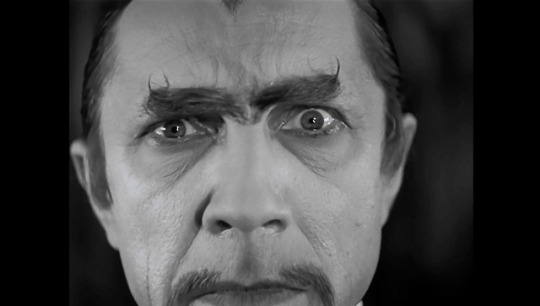

As Halloween approaches I will be reviewing my top 10 NON-UNIVERSAL Horror Films from the 1930′s. I was reasonably drunk and picked the list in five minutes. Be kind.
Number 9 - White Zombie (1932) - Victor & Edward Halperin Productions and distributed by United Artists in the USA
151 notes
·
View notes
Text
Blog Post 4: Zombies

There are different versions and meanings of the “zombie” in Haitian Vodou practices. The version that America used as a model was a reanimated, soulless corpse taken from its grave to serve the master who had awakened it. This is where Hollywood got its inspiration for the “zombie” as we know it today. We see zombies today as soulless, voiceless, monsters deprived of intellect. White anxieties concerning African Americans show a lot throughout the representation of the zombie. We see that in Haitian Vodou practices the zombie was awakened to serve his master which ties into slavery. Slaves were brought to America solely to serve their masters. Also, slaves were meant to not speak back, show emotion, have interests, or be educated. This is also symbolized through the idea of the “zombie”. While watching the movie White Zombie we see zombies working in the sugar mill. These zombies are “lifeless” and continue working even when a worker falls into the mill. To me, this symbolized how whites wanted their black slaves to perform. They were meant to work their lives away with no purpose for anything else. Whited feared that the slaves would revolt or turn against them. They refused slaves from reading with fears that they’d become educated. Slaves were restricted from practicing their native religions or speaking native languages because of the fear of the unknown. The film brings back the fear of the unknown. Americans didn’t know or understand the Vodou religion so they immediately turned it into something negative. As Rushton and Moreman state in their book, “Though the official state religion of Haiti is Catholicism, the vast majority of Haitians practice the religious syncretism that is Vodou, a tradition that is often misunderstood at best, and vilified at worst” (Rushton & Moreman 2). This shows throughout history and pop culture today. There are many lores and ideas of “voodoo” which can be considered evil. Many people know Vodou as voodoo dolls and black magic. They don’t understand where the practice actually originates from and what the intended purposes are.
Moreman, Christopher M., and Cory James Rushton. Race, Oppression and the Zombie: Essays on Cross-Cultural Appropriations of the Caribbean Tradition. McFarland & Co., 2011.
Halperin, Victor, Edward Halperin, Garnett Weston, Bela Lugosi, and Madge Bellamy. White Zombie. Los Angeles?: United Artists Corp, 1932.
3 notes
·
View notes
Text
Blog Post 4: “Zombie” or “Zombi”?. The little “e” that makes a BIG Difference.
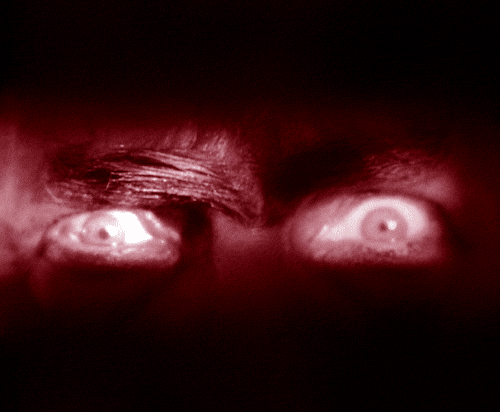
As many know, the Zombie, or should I say “Zombi” archetype developed around the 18th century during the amalgamation of the Haitian and American cultures. I use the phrase “Haitian Culture” lightly as this was truthfully a mix of culture from the African and Caribbean immigrants that were forcefully moved to the island. Although the state religion of Haiti is Catholicism, the majority of the island inhabitants were known to practice a religion known as Vodou. Somewhere along the way, this beautiful religion was translated into a very ignorant “Americanized” practice of this religion known as “Voodoo”. With the religious injustice that is American Voodoo, there are several myths and lore’s attached to such. One of the greatest of which is demonstrated when the “Zombie” is created. The first image of a zombie we see is introduced in 1932 through the Film, “White Zombie” produced and directed by Edward and Victor Halperin. In this film, the very famous Bela Lugosi plays the Character of a mysterious Zombie master who controls a hoard or Zombies through Voodoo practices. In this movie, we observe many classic stereotypes regarding the Zombie archetype as it existed at this time. Bela Lugosi’s Character reflects the “Voodoo Witch Doctor” archetype in which was believed to steal corpse’s from their resting places and re-animate them to provide as servants. This entire concept appears almost as a perfect metaphor for the events that actually perspired during this time. People. Originally indigenous to Various parts of Africa and many of the Caribbean Island were inadvertently “Stolen”, for a lack of better words, from their home. From there, there are forced on a journey to America where they would be made to work as “Indentured Servants” for the white Europeans who had brought them there. To make matters worse, the concept of indentured servitude slowly slips away as any promise of freedom for the new slaves are completely encapsulated. The voyage for the slaves that ended up on the Haitian Island was no shy of Brutal. Slaves were packed into ships, placed in unsanitary conditions, and treated no greater than basic cargo. In fact, the individuals who proved too weak for these harsh conditions were often discarded over the ship as if purely expendable. Those that did make it to the island were left exhausted and dehumanized. It is possible that the first appearance of slaves on the island gave off the impression of “Zombies” as they were marched on land, most likely barebones and lifeless. It is no shock that this archetype found its debut during this period. It would serve as the perfect gimmick in which the people of the NEW WORLD would hide their ugly OLD PAST. My only question is…what proves more monstrous; the zombie archetype or the truth behind its origin?
3 notes
·
View notes
Text
The birth of a horror fan
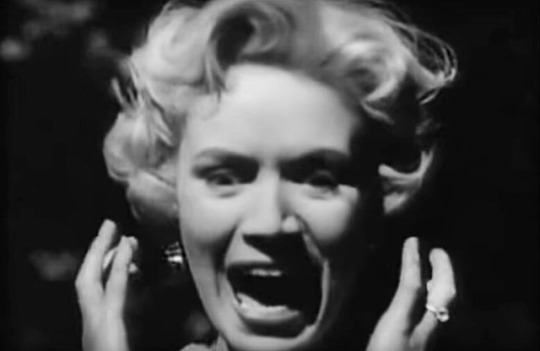
Still of Veronica Hurst as Kitty Murray in The Maze, 1953
I’ve watched 36 horror films in 26 days! For those that know me, this is a lot. For the first time I’m taking party in 31 days of horror. It’s not over yet, I have more horror films to see before the end of October. Viewing this many horror films in less than a month is a record for me!
I never thought I would call myself a horror fan. In the past I would occasionally watch horror films, usually hiding under blankets or peaking through fingers.
Why do some horror films scare me more than others? Is it imagination, sensitivity, suggestibility, tension, violence?
I’ve approached 31 days of horror with a clear plan to watch horror films released between 1900 and 1959. The films I’ve watched are rare, classics, beautifully crafted stories, and the images stay with you.
I’ve noted some interesting recurring themes and plot devices such as newspaper headlines; supposedly dead bodies sitting upright in the morgue; religious figures fighting evil; ‘What a strange man’ is often said; scientists meddling with nature features; cats hissing as a warning (take heed!); Scotland Yard is useless in dark times.

Still of Fay Wray as Eve Trowbridge in The Most Dangerous Game, 1932
I’m now a fan of the original Scream Queen, Fay Wray. She adds depth and sensitivity to the damsel in distress leading lady. She often finds courage and strength in her characters. If you’re not familiar with Wray’s work, check out: Doctor X, dir. Michael Curtiz, 1932; The Most Dangerous Game, dir. Irving Pichel and Ernest B. Schoedsack, 1932; and The Evil Mind / The Clarvoyant, dir. Maurice Elvey, 1935.

Still of Norma Eberhardt as Rachel Mayberry in the Return of Dracula, 1958
Female empowerment has been a theme I’ve relished. Women taking control, showing courage and ingenuity in films like: Cry of the Werewolf, dir. Henry Levin, 1944; She-Wolf of London, dir. Jean Yarbrough, 1946; The Return of the Vampire, dir. Lew Landers, 1943; The Return of Dracula, dir. Paul Landres, 1958; Island of Doomed Men, dir. Charles Barton, 1940; The Maze, dir. William Cameron Menzies, 1953; Phantom of the Opera, dir. Arthur Lubin, 1943.
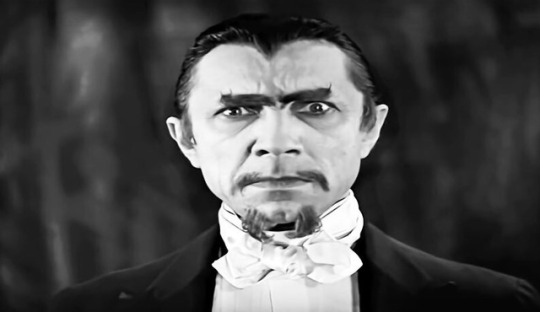
Still of Bella Lugosi as "Murder" Legendre in the White Zombie, 1932
I’m becoming familiar with the work of some of the greatest actors of the genre. I’ve seen lots of Bella Lugosi films: Dracula, dir. Tod Browning, 1931; White Zombie, dir. Victor Halperin, 1932; Son of Frankenstein, dir. Rowland V. Lee, 1939; Black Friday, dir. Arthur Lubin, 1940; The Wolf Man, dir. George Wagner, 1941; The Return of the Vampire, dir. Lew Landers, 1943. Boris Karloff co-starred in many films with Lugosi, but was a star in his own right. I’ve seen more Karloff films: The Mummy, dir. Karl Freund, 1932; The Ghoul, Dir. T. Hayes Hunter, 1933; The Black Room, dir. Roy William Neill, 1935; Son of Frankenstein, dir. Rowland V. Lee, 1939; Black Friday, dir. Arthur Lubin, 1940; The Devil Commands, dir. Edward Dmyryk, 1941.

Still of Boris Karloff as Ardeth Bay / Imhotep / The Mummy in The Mummy, 1932
With only a few days left of October, I’m already planning the films I might watch next October. 31 days of Australian horror films? I’m not sure yet, but I will certainly have fun when I get there. Beginning something, challenging myself, learning, enjoying the adrenaline of being scared, laughing and sharing these films with others, I’ve enjoyed discovering some truly incredible films.
Beginning is the theme for newCardigan’s GLAM Blog Club this month.
#glamblogclub#glam#ausglamblog#archivist#museum archivist#glam blog club#newcardigan#glam geekery#horror#horror films#classics#31 days of horror#halloween
5 notes
·
View notes